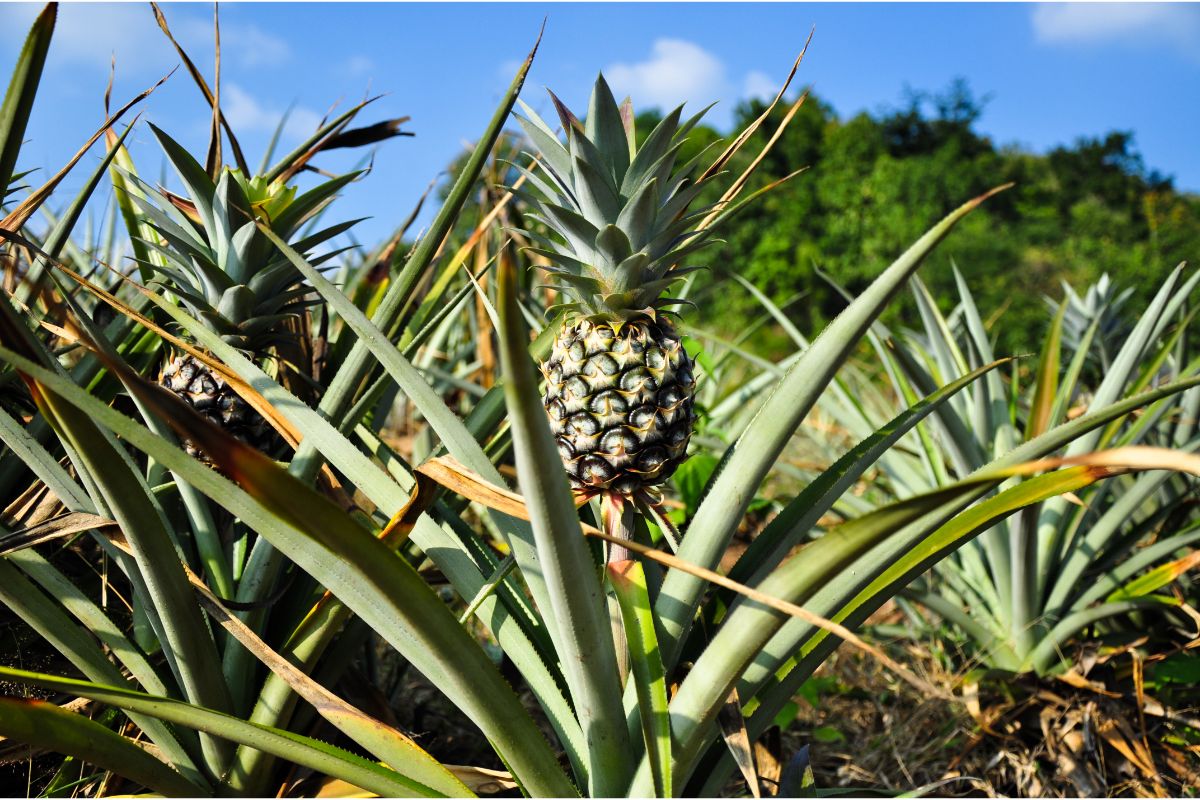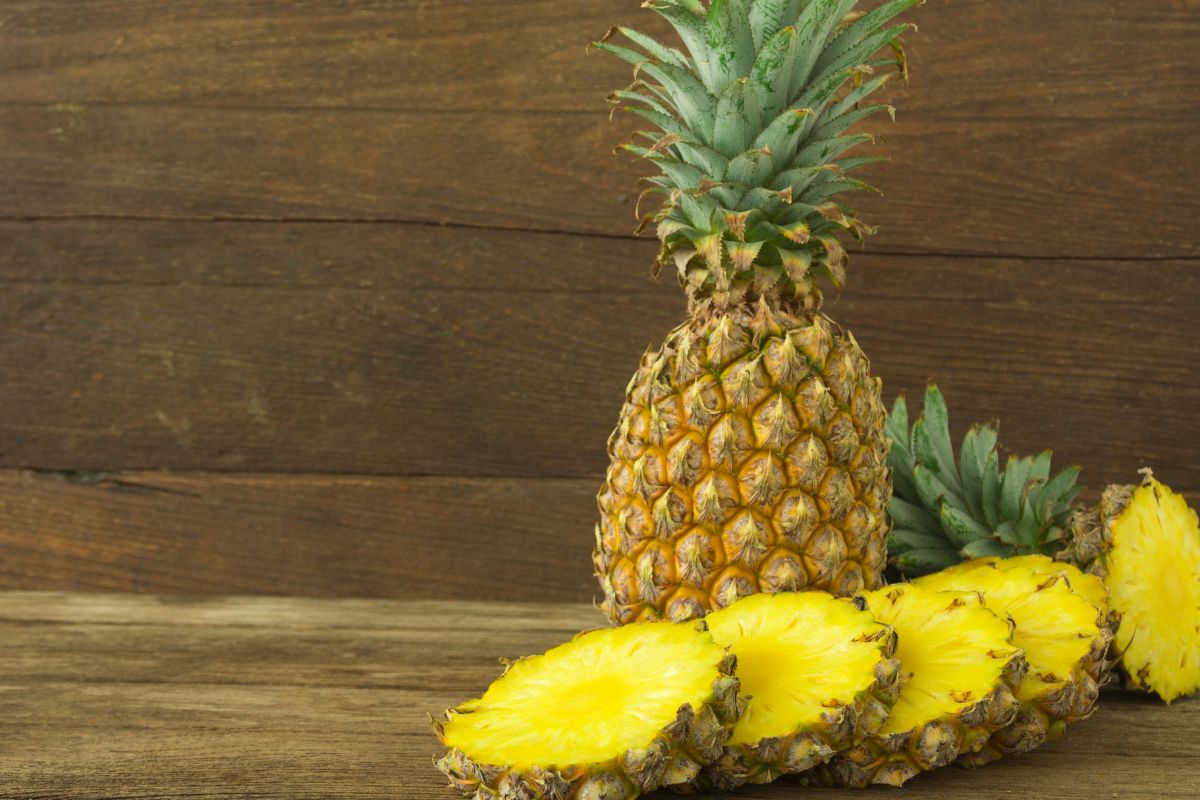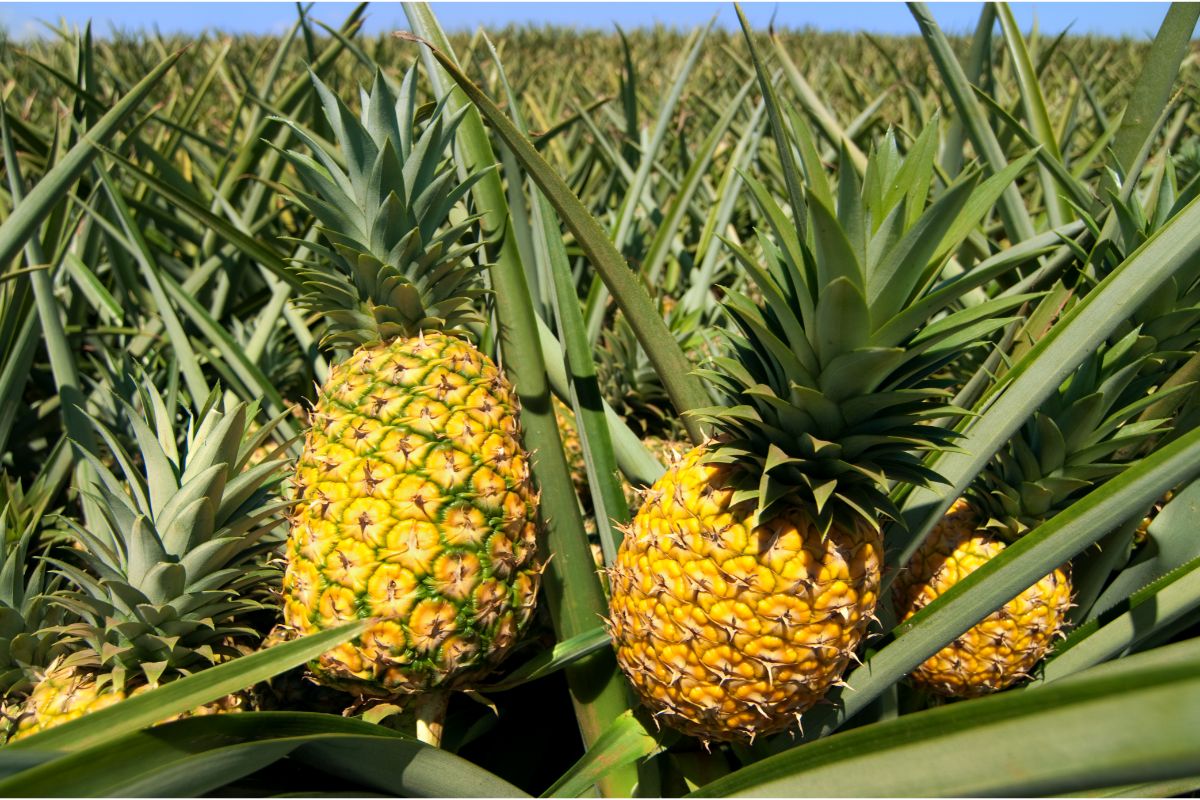If you love to eat pineapples, you may be wondering how pineapples grow and when they are ready to eat. These are common questions people have as pineapples are a bit of a mystery.
Many people assume that pineapples grow on trees like many other types of fruit such as apples, peaches or cherries. Pineapples are also considered a tropical fruit, which only adds to their overall mystery.
This is a type of fruit that is rarely seen growing, which is why many people don’t know how pineapples actually grow. Most of the time you don’t see them in grocery stores until they’re picked and ready to sell.
If you like knowing where your food comes from and how it’s made, you might want to know how pineapples grow. Read on to learn more about pineapples and the process they must go through before they are ready to eat.
How do pineapples grow?
An often misunderstood type of fruit is the classic pineapple, as many people don’t know how pineapples grow. Pineapples do not grow on trees as you might suspect as they grow on tall leafy plants and only produce one fruit.
Because of this, pineapple harvesters need to plant hundreds of these pineapple plants to get a crop. Since only one pineapple is produced from each plant, you need many plants to get a harvest.

This plant consists of thick and long leaves that spread out from the middle, with a pineapple growing right in the middle. This is very unique and unlike most other types of fruit you might see at the grocery store.
But unpollinated fruit fused into the large pineapple you end up buying at the grocery store. Because of this, it has this unique pattern on the outside of the scaly skin.
Pineapples also require a warm and humid environment that is subtropical as they are considered a tropical fruit. Because of this, not every part of the US will be a good place to grow pineapples.
One of the main producers of pineapples in the US is Florida as the subtropical climate is perfect for pineapples to grow and thrive. However, there are some other places where pineapples can grow when the weather is warm and humid.
Pineapples take two to three years to grow
Pineapples are a type of fruit that take 2 to 3 years to fully grow and mature to the point where they can produce fruit. Like any type of fruiting tree or plant, pineapple plants must be fully mature before they can bear fruit.
Usually 2 to 3 years is not very long for fruiting plants. Because it is quite common with fruit trees that it takes many years before they even bear the first fruit harvest.
One of the interesting things about pineapples is that the plant can only produce so many pineapples before it wears out. On average, a pineapple plant only produces 2 to 3 years before it stops producing good fruit.
This is quite unique compared to other types of fruit plants as it gives it a very short lifespan. Because of this, pineapple harvesters need to harvest copious amounts of pineapple to get the amount of fruit they need.
They also need to actively plant more pineapple plants to ensure they always have a harvest every year. This can be difficult to manage, which is one of the reasons why very few orchards actually grow pineapples.
In the US in particular, pineapple orchards are fairly rare and will not be as common as other types of orchards. That plus the fact that pineapples need a subtropical climate to grow properly.
Pineapples don’t grow on trees
What is the most common misconception about pineapples is that they grow on trees, which is not true. Pineapples don’t grow on trees, instead they grow on a tall plant that can grow to about 5 feet tall on average.

Often referred to as shrubs, these plants have an appearance similar to a palm tree in that they have long fronds that protrude. Each plant can only produce one pineapple, making it difficult to have enough plants for a full harvest.
A special feature of pineapple plants is that the pineapple grows upright in the middle of the plant. So it doesn’t even look real as it looks like someone just put a pineapple in the middle of the plant.
These are just some of the things that make pineapples so unique from other fruits.
Pineapples need to ripen on the stalk
What is not widely known is that pineapples must be ripened on the broth before being harvested. While most fruit will continue to ripen after packaging, pineapples will continue to ripen to a very small extent once removed from the plant.
This can be quite a big problem as pineapples are sold and distributed all over the world and are often picked before they are ripe. So if you see a green pineapple in stores, chances are that pineapple will never mature enough to be eaten.
Because of this, you may have trouble getting a good pineapple at your local grocery store. You may find that they are all too hard and sour, not sweet and soft like they should be if they were right.
And unfortunately, the least ripe pineapples you see at the grocery store are never going to be really good to eat. They’ll only mature a little, and if they’re totally immature, they’ll never be good.
Because of this, you should make sure you know what to look for in a pineapple so you choose one that will ripen. This way you can avoid spending your money on pineapples that don’t get a chance to be really tasty.
A little soft
A fully ripe pineapple should feel slightly soft and not quite firm. An unripe pineapple will be very hard and will not yield at all if you squeeze it very hard.
A pineapple shouldn’t be mushy, but it should give a little when you squeeze it, which is an easy way to tell if it’s ripe. Preferably, pineapples should not be picked until they have very little yield.
That way they don’t become overripe during transport, but rather ripen just enough to be perfect for consumption. Unfortunately, this is not usually done as pineapples are often picked while they are still hard.
So you should squeeze pineapples at the grocery store before choosing one as you’ll want something a little softer.
Pale yellow color
Pineapples should be light to medium yellow in color throughout the fruit. They should not be dark brown or green as this could indicate they are either overripe or severely underripe.

Would you like to look for a pineapple that is almost banana yellow in color all over as this indicates it is ripe or almost right? Pineapples that darken slightly towards the bottom also indicate that the fruit is ripe and edible.
Mini harvesters pick pineapples from plants while they are still green, resulting in the fruit never really ripening. For this reason, you should only look at yellow pineapples in grocery stores.
heaviness
Something you may have heard of is that pineapples actually get heavier as they mature. This is usually because so much sugar has been produced inside the fruit, resulting in a heavier pineapple.
However, care must be taken when trying it out in grocery stores as it can be easy to pick an immature pineapple. You should test pineapples of the same size to see which one is heavier.
Some pineapples can be heavier simply because they’re larger, so try testing pineapples of the same size. The heaviest pineapple that’s that banana-yellow color will most likely be a ripe pineapple that’s good to eat.
sweet smell
One thing you can do when picking fruit is smell it to see what the smell is like. This is a common trick you can use with a variety of fruits, as they usually take on a sweet and fruity scent when ripe.
The same rule applies to pineapples as they naturally have a strong fruity and sweet scent when ripe. This is usually because sugary syrup oozes from the pineapple itself, creating that sweet smell.
If a pineapple doesn’t smell like anything, it could indicate that it’s very immature and hasn’t built up enough sugar. This creates a hard and sour pineapple that is not good to eat.
Loose fronds
When trying out pineapples at the store, loose leaves are a good indication that the pineapple is ripe. The fronds at the top loosen easily and can be pulled out when the fruit itself is ripe and ready to eat.
If the fronds are light green and very stiff, this could indicate that the pineapple is still unripe. This is because the fruit holds tighter to these fronds when it is still hard and underdeveloped.
